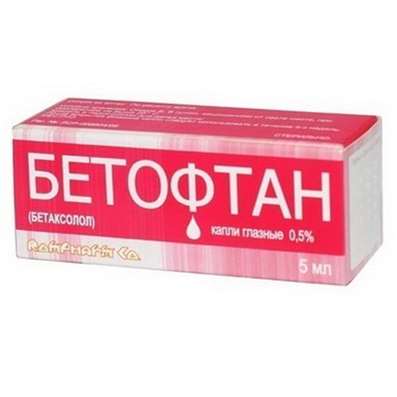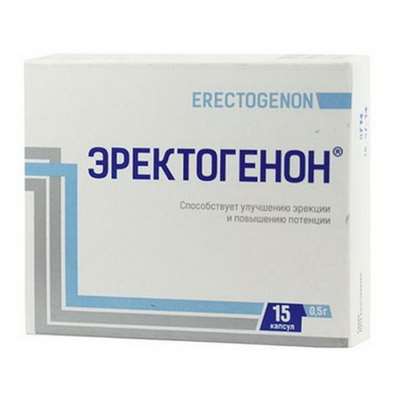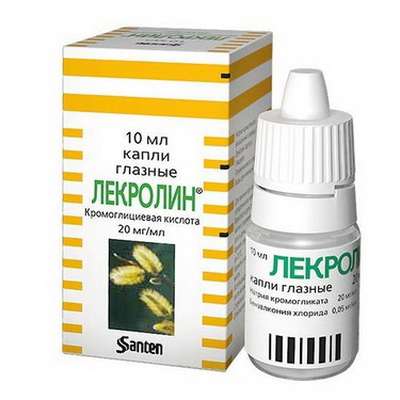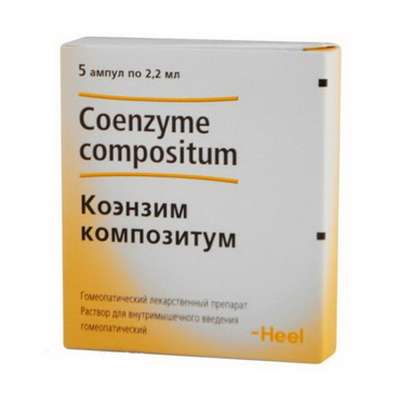Instruction for use: Artoxan
I want this, give me price
Active substance Tenoxicam
ņ“’ M01AC02Tenoxicam
Pharmacological group
Non-steroidal anti-inflammatory drug [NSAIDs - Oxicams]
Nosological classification (ICD-10)
G43 Migraine
The pain of migraine, Migraine, hemiplegic migraine, Migraine headache, A migraine attack, Continuous headache, hemicranias
K08.8.0 * Painful toothache
Dentinal pain, Dentinal pains, Pain pulpitis, Anesthesia in dentistry, Pain syndromes in dental practice, Pain after removal of tartar, Pain when extracting a tooth, Toothache, Pain after dental interventions
M06.9 Other specified rheumatoid arthritis
Rheumatoid arthritis,Pain syndrome in rheumatic diseases, Pain in rheumatoid arthritis, Inflammation in rheumatoid arthritis, Degenerative forms of rheumatoid arthritis, Children's rheumatoid arthritis, Exacerbation of rheumatoid arthritis, Acute articular rheumatism, Rheumatic arthritis, Rheumatic polyarthritis, Rheumatoid arthritis, Rheumatic polyarthritis, Rheumatoid arthritis, Rheumatoid arthritis of active course, Rheumatoid arthritis, Rheumatoid polyarthritis, Acute rheumatoid arthritis, Acute rheumatism
M10.9 Gout, unspecified
Arthritis Gouty, Acute gouty arthritis, Acute attack of gout, Gouty Arthritis, Articular syndrome with exacerbation of gout, Articular syndrome with gout, Urarturia, Chronic arthritic arthritis, Acute gout, Salt diathesis
M13.9 Arthritis, unspecified
Arthritis,Purulent arthritis (non-infectious), acute Arthritis,Pain in acute inflammatory diseases of the musculoskeletal system,Pain in chronic inflammatory diseases of the musculoskeletal system,The pain in osteoarthritis, Inflammation in osteoarthritis, Inflammatory arthropathy, Inflammatory and degenerative joint diseases, Inflammatory disease of the musculoskeletal system, Inflammatory joint disease, Inflammatory diseases of the musculoskeletal system, destructive arthritis, The disease of the musculoskeletal system, Diseases of the musculoskeletal system, Diseases of the musculoskeletal system and connective tissue, Infections musculoskeletal system, monoartrit, Non-infectious arthritis, rheumatic arthritis, Osteoarthritis, Acute inflammation of the musculoskeletal tissue, Acute inflammatory diseases of the musculoskeletal system, Acute inflammatory condition of the musculoskeletal system, Acute arthritis, Acute osteoarthritis, Post-traumatic osteoarthritis, Reactive arthritis, Chronic inflammatory diseases of the joints, Chronic arthritis, Chronic inflammatory arthritis, Chronic inflammation of the inner layer of the joint capsule, Chronic inflammation of the joint capsule,Chronic inflammatory disease of the joints, Exudative arthritis
M25.5 Pain in the joint
Arthralgia, Pain syndrome in musculo-articular diseases, Pain syndrome in osteoarthritis, Pain syndrome in osteoarthritis, Pain syndrome in acute inflammatory diseases of the musculoskeletal system, Pain syndrome in chronic inflammatory diseases of the musculoskeletal system, Pain in the joints, Soreness of the joints, Soreness of joints in severe physical exertion, Painful inflammatory joint damage, Painful conditions of the musculoskeletal system, Painful joint conditions, Painful traumatic affection of joints, Pain in the musculoskeletal system, Pain in Shoulder Joints, Pain in the joints, Joint pain, Joint pain with injuries, Musculoskeletal pain, Pain with osteoarthritis, Pain in the pathology of the joints, Pain in rheumatoid arthritis, Pain in chronic degenerative bone diseases, Pain in chronic degenerative joint diseases, Bone-joint pain, Joint pain, Arthritic pain of rheumatic origin, Articular pain syndrome, Joint pain, Rheumatic pain, Rheumatic pains
M45 Ankylosing spondylitis
Ankylosing spondylarthrosis, Marie-Strumpel disease, Ankylosing spondylitis, Pain syndrome in acute inflammatory diseases of the musculoskeletal system, Pain syndrome in chronic inflammatory diseases of the musculoskeletal system, Bechterew's disease, Ankylosing spondylitis, Diseases of the spinal column, Rheumatic spondylitis, Bechterew-Marie-Strumpel disease
M65 Synovitis and tendosynovitis
Acute tenosynovitis, Tendovaginitis (tenovaginitis), Tendosinovit (tenosynovitis), Tendovaginitis, Osteoarthritis in musculo-articular diseases, Inflammatory disease of soft tissues, Nonspecific tenosynovitis, Tendosinovit
M71 Other bursopathies
Bursitis, Bursopathy, Diseases of soft tissues, Osteoarthritis in musculo-articular diseases, Inflammatory disease of soft tissues, Subacute bursitis
M79.1 Myalgia
Myofascial pain syndromes ,Pain syndrome in musculo-articular diseases, Pain syndrome in chronic inflammatory diseases of the musculoskeletal system, Pain in the muscles, Tenderness of muscles, Muscular soreness in severe physical exertion, Painful conditions of the musculoskeletal system, Pain in the musculoskeletal system, Pain in the muscles, Pain at rest, Muscle aches, Muscle pain, Musculoskeletal pain, Myalgia, Muscle pain, Muscle pain at rest, Muscle pain, Muscular pain of non-rheumatic origin, Muscle pain of rheumatic origin, Acute muscle pain, Rheumatic pain, Rheumatic pains, Myofascial syndrome, Fibromyalgia
M79.2 Neurology and neuritis, unspecified
Pain syndrome with neuralgia, Brachialgia, Occipital and intercostal neuralgia, Neuralgia, Neuralgic pain, Neuralgia, Neuralgia of intercostal nerves,Neuralgia of the posterior tibial nerve, Neuritis, Neuritis traumatic, Neuritis, Neurological Pain Syndromes, Neurological contractures with spasms, Acute neuritis, Peripheral neuritis,Post-traumatic neuralgia,Severe pain of a neurogenic nature, Chronic neuritis, Essential neuralgia
N94.6 Dysmenorrhea Unspecified
Pain during menstruation, Functional disorders of the menstrual cycle, Menstrual cramps, Emmeniopathy, Pain during menstruation, Painful menstrual irregularities, algomenorrhea, algomenoreya, Pain smooth muscle spasm, Pain spasm of smooth muscles (renal and biliary colic, intestinal spasms, dysmenorrhea), Pain spasm of smooth muscles of internal organs (kidney and biliary colic, intestinal spasms, dysmenorrhea), Disalgomenoreya, dysmenorrhea, Dysmenorrhea (essential) (Exfoliative), menstrual disorder, menstruation painful, metrorrhagia, Violation of the menstrual cycle, Menstrual irregularities, Prolaktinzavisimoe menstrual disorders, Prolaktinzavisimoe menstrual dysfunction, Pain spasm of smooth muscles of internal organs, Spasmodic dysmenorrhea, Primary disalgomenoreya
R51 Headache
Pain in the head, Cephalgia, Pain with sinusitis, Pain in the back of the head, Painful headache, Headache of vasomotor genesis, Headache of vasomotor origin, Headache with vasomotor disorders, Headache, Neurological headache, Serial headache
R52.2 Other constant pain
Pain syndrome, rheumatic origin, Pain at vertebral lesions, Pain in the chamber, Pain for burns, Pain syndrome weak or moderate, Perioperative pain,Moderate to severe pain, Moderately or weakly expressed pain syndrome, Moderate to severe pain, Ear pain of otitis, Neuropathic pain, neuropathic pain
R52.9 Unspecified Pain
Pain after cholecystectomy, Pain shooting, Non-malignant pain, Obstetric and gynecological pain, Pain syndrome, Pain in the postoperative period, Pain in the postoperative period after orthopedic surgery, Pain of inflammatory genesis, Pain than cancer genesis, Pain syndrome after diagnostic procedures, Pain after surgery Diagnostic, Pain after surgery, Pain after orthopedic surgery, Pain after injuries, Pain after the removal of hemorrhoids, Pain at the non-rheumatic inflammation of nature, Pain in inflammatory lesions of the peripheral nervous system, Pain in diabetic neuropathy, Pain in acute inflammatory diseases of the musculoskeletal system, Pain when the tendon pathology, Pain smooth muscle spasm, Pain spasm of smooth muscles (renal and biliary colic, intestinal spasms, dysmenorrhea), Pain spasm of smooth muscles of internal organs, Pain spasm of smooth muscles of internal organs (kidney and biliary colic, intestinal spasms, dysmenorrhea), Pain in trauma syndrome, Pain with injuries and after surgical interventions, Pain in chronic inflammatory diseases of the musculoskeletal system, Pain with duodenal ulcer, Pain syndrome in gastric ulcer, Pain syndrome in gastric ulcer and duodenal ulcer, pain, Pain during menstruation, pain syndromes, painful condition, Painful foot fatigue, Sore gums when wearing dentures, Soreness of the cranial nerves exit points, Painful menstrual irregularities, Painful dressings, Painful muscle spasm, Painful teeth growth, Melosalgia, Pain in the area of the surgical wound, Pain in the postoperative period, Pain in the body, Pain after diagnostic procedures, Pain after orthopedic surgery, Pain after surgery, The pains of the flu, Pain in diabetic polyneuropathy, Pain for burns, Pain during sexual intercourse, Pain during diagnostic procedures, Pain during therapeutic procedures, for colds Pain, Pain in sinusitis, Pain in trauma, Pain traumatic, The pain in the postoperative period, Pain after diagnostic procedures, The pain after sclerotherapy, Pain after surgery, postoperative Pain, Pain postoperative and posttraumatic, posttraumatic pain, Pain when swallowing, Pain in infectious and inflammatory diseases of the upper respiratory tract, The pain of burns, The pain in traumatic muscle injury, Pain in trauma, The pain of tooth extraction, The pain of traumatic origin, Pain caused by spasm of smooth muscles, Expressed pain syndrome, Expressed pain syndrome, traumatic origin, Postoperative pain, Post-traumatic pain, Post-traumatic pain syndrome, Torpid pain, Traumatic pain, Traumatic pain, Mild pain, Moderately severe pain, Moderate pain, Polyarthralgia with polymyositis
T14.9 Injury unspecified
Pain syndrome after trauma, Pain syndrome with injuries, Pain syndrome with trauma and after surgery, Pain in case of injury, Pain of a traumatic nature, Joint pain with injuries, Postoperative and post-traumatic pain, Pain in case of injury, Pain of a traumatic origin, Severe pain syndrome of traumatic origin, Deep tissue damage, Deep scratches on the trunk, Closed injury, Minor Household Injuries, Minor skin damage, Violations of the integrity of soft tissues, Uncomplicated trauma, Extensive traumatic injury, Acute pain syndrome of traumatic origin, Edema with trauma, Postponed sports injuries, Post-traumatic pain, Soft tissue injuries, Joint wounds, Sports injuries, Injury, Traumatic pain, Traumatic pains, Traumatic infiltrate,Injuries to sports
T30 Thermal and chemical burns, unspecified
Pain syndrome with burns, Pain in burns, Pain with burns, Sluggishly healing post-burn wounds, Deep burns with a wet scab, Deep burns with abundant compartments, Deep burn, Laser burn, Burn, Burning of the rectum and perineum, Burn with mild exudation, Burn disease, Burn injury, Superficial burn, Superficial burn of I and II degree, Superficial skin burns, After-burn trophic ulcer and wound, Post-burn complication, Loss of fluid during burns, Sepsis burn, Thermal burns, Thermal skin lesions, Thermal burn, Trophic after-burn ulcers, Chemical burn, Surgical burn
Composition
Lyophilizate for solution for intravenous and intramuscular administration 1 fl.
active substance:
tenoxicam 20 mg
auxiliary substances: mannitol - 80 mg; ascorbic acid 0.4 mg; disodium edetate 0.2 mg; trometamol - 3.3 mg; sodium hydroxide and hydrochloric acid - q.s.
Each ampoule of the solvent contains: water for injection - 2 ml
Description of dosage form
Lyophilized powder or compacted mass in the form of a tablet of green-yellow color.
Solvent is a colorless, transparent, odorless liquid.
pharmachologic effect
Pharmacological action - anti-inflammatory, analgesic, inhibiting COX (cyclooxygenase).
Pharmacodynamics
Tenoxicam, which is a thienothiazine oxycam derivative, is an NSAID. In addition to anti-inflammatory, analgesic and antipyretic effects, the drug also interferes with the aggregation of platelets.
The mechanism of action is based on inhibition of the activity of COX-1 and COG-2 isoenzymes, as a result of which the synthesis of PG in the inflammatory focus as well as in other tissues of the body decreases. In addition, tenoxicam reduces the accumulation of leukocytes in the inflammatory focus, reduces the activity of proteoglycanase and collagenase in human cartilage.
Anti-inflammatory effect develops by the end of the first week of therapy.
Pharmacokinetics
Suction. Absorption is fast and complete. Bioavailability is 100%.
Distribution. Cmax in the blood plasma is observed after 2 hours. The distinctive ability of tenoxicam is a long duration of action and a prolonged T1 / 2 - 72 hours. The drug is 99% associated with plasma proteins. Tenoxicam penetrates well into the synovial fluid. Easily penetrates through the histohematological barriers.
Metabolism. Metabolised in the liver by hydroxylation to form 5-hydroxypyridyl.
Excretion. 1/3 is secreted through the intestine with bile, 2/3 is excreted by the kidneys in the form of inactive metabolites.
Indications
rheumatoid arthritis;
osteoarthritis;
ankylosing spondylitis;
articular syndrome with exacerbation of gout;
bursitis;
tenosynovitis;
pain syndrome (weak and medium intensity): arthralgia, myalgia, neuralgia, migraine, dental and headache, algodismenorea;
pain with injuries, burns.
The drug is intended for symptomatic therapy, reducing pain and inflammation at the time of use, the progression of the disease is not affected.
Contraindications
hypersensitivity to the active substance or auxiliary components of the drug (there is a possibility of cross-sensitivity to acetylsalicylic acid (ASA), ibuprofen and other NSAIDs);
erosive and ulcerative lesions of the stomach and duodenum in the stage of exacerbation;
gastrointestinal bleeding (including in the anamnesis);
inflammatory bowel disease: Crohn's disease or ulcerative colitis in the acute stage;
severe renal failure (Cl creatinine less than 30 mL / min);
progressive kidney disease;
severe hepatic impairment;
complete or incomplete combination of bronchial asthma, recurrent nasal polyposis and paranasal sinuses and intolerance to ASA or other NSAIDs (including and in anamnesis);
established diagnosis of blood coagulation system diseases;
Decompensated heart failure;
therapy of perioperative pain during coronary artery bypass grafting;
pregnancy;
the period of breastfeeding;
age to 18 years.
With caution: peptic ulcer of the stomach and duodenum; ulcerative colitis and Crohn's disease without exacerbation; liver disease in history; hepatic porphyria; chronic renal failure (Cl creatinine 30-60 ml / min); chronic heart failure; arterial hypertension; a significant decrease in BCC (including after surgery); elderly patients (over 65 years of age) (including those receiving diuretics, weakened patients and low body weight); bronchial asthma; cardiac ischemia; cerebrovascular diseases; dyslipidemia / hyperlipidemia; diabetes; diseases of peripheral arteries; smoking; presence of Helicobacter pylori infection; long-term use of NSAIDs; alcoholism; severe physical illness; autoimmune diseases (systemic lupus erythematosus (SLE) and mixed connective tissue disease); simultaneous reception of GCS (including prednisone), anticoagulants (including warfarin), antiaggregants (including ASA, clopidogrel), SSRIs (including citalopram, fluoxetine, paroxetine, sertraline).
pregnancy and lactation
The use of the drug during pregnancy and during breastfeeding is contraindicated.
Side effects
The incidence of side effects is classified according to WHO recommendations: very often (> 1/10); often (from> 1/100, <1/10); infrequently (> 1/1000, <1/100); rarely (> 1/10000, <1/1000); very rarely (<1/10000); not installed.
On the part of the digestive system: very often - dyspepsia (nausea, vomiting, heartburn, diarrhea, flatulence), NSAIDs-gastropathy, abdominal pain, stomatitis, anorexia, impaired liver function; rarely - ulceration of the mucous membrane of the gastrointestinal tract, bleeding (gastrointestinal, uterine, hemorrhoidal), perforation of intestinal walls.
From the CCC (cardiovascular system): rarely - heart failure, tachycardia, increased blood pressure.
From the central nervous system (CNS): often - dizziness, headache, drowsiness, depression, agitation, hearing loss, tinnitus, eye irritation, visual impairment.
From the skin and subcutaneous tissue: often - skin itching, rash, hives and erythema; very rarely - photodermatitis, Stevens-Johnson syndrome, Lyell's syndrome.
From the urinary system: often - an increase in the content of urea nitrogen and creatinine in the blood.
On the part of the organs of hematopoiesis: often - agranulocytosis, leukopenia; rarely - anemia, thrombocytopenia, leukopenia, pancytopenia.
From the hepatobiliary system: often - increased ALT, AST, GGT and bilirubin levels in the serum.
Laboratory indices: hypercreatininaemia, hyperbilirubinemia, increased urea nitrogen concentration and hepatic transaminase activity, lengthening bleeding time.
On the background of treatment, there may be mental disorders and metabolic disorders.
Interaction
Tenoxicam has a high degree of binding to albumin and can, like all NSAIDs, enhance the anticoagulant effect of warfarin and other anticoagulants. It is recommended to monitor blood levels when combined with anticoagulants and hypoglycemic drugs for oral administration, especially at the initial stages of use of the drug Artoxane.
There was no possible interaction with digoxin.
As with other NSAIDs, it is recommended that the drug be used with caution when cyclosporine is used because of the increased risk of developing nephrotoxicity.
Joint use with quinolones may increase the risk of seizures.
Salicylates can displace tenoxicam from bonding with albumin and, accordingly, increase the clearance and Vd of the drug. It is necessary to avoid the simultaneous use of salicylates or two or more NSAIDs (an increased risk of complications from the gastrointestinal tract).
There is evidence that NSAIDs reduce the excretion of lithium. In this regard, patients receiving lithium therapy should more often monitor the concentration of lithium in the blood.
NSAIDs (non-steroidal anti-inflammatory drugs) can cause sodium, potassium and liquid retention in the body, disrupting the action of natriuretic diuretics. This should be remembered when combined with such diuretics in patients with CHF and hypertension.
With caution, it is recommended to use NSAIDs in conjunction with methotrexate, NSAIDs decrease the excretion of methotrexate and may increase its toxicity.
NSAIDs should not be used within 8-12 hours after the administration of mifepristone, tk. can reduce its effect.
It is necessary to take into account the increased risk of developing gastrointestinal bleeding when combined with corticosteroids.
Reduces the effectiveness of uricosuric drugs, enhances the effect of anticoagulants, fibrinolytics, side effects of mineralocorticosteroids and GCS, estrogens; reduces the effectiveness of antihypertensive drugs and diuretics.
Inducers of microsomal oxidation in the liver (phenytoin, ethanol, barbiturates, rifampicin, phenylbutazone, tricyclic antidepressants) increase the production of hydroxylated active metabolites.
Joint use with antiplatelet agents and SSRIs increases the risk of developing gastrointestinal bleeding.
Cardiac glycosides, when taken together with NSAIDs, can increase heart failure, reduce GFR, and increase the plasma level of cardiac glycosides.
There was no interaction with the use of tenoxicam with cimetidine.
There was no clinically significant interaction in the treatment with tenoxicam and penicillamine or parenteral gold.
Increased risk of nephrotoxicity in the combined use of NSAIDs with tacrolimus.
Increased risk of hematological toxicity when using NSAIDs with zidovudine.
Dosing and Administration
Intramuscularly (intramuscularly), intravenously (intravenously).
In / m injections do deeply.
The duration of IV (intravenous) administration should not be less than 15 seconds.
In / m (intramuscular) or intravenous (intravenous) administration is used for short-term (1-2 days) treatment at a dose of 20 mg / day. If necessary, further therapy is transferred to oral dosage forms of tenoxicam.
The injection solution is prepared immediately before use by dissolving the contents of the vial with the supplied solvent. After preparation, the needle is replaced.
Overdose
Symptoms (with a single injection): abdominal pain, nausea, vomiting, erosive-ulcerative gastrointestinal tract (gastrointestinal tract), impaired renal and hepatic function, metabolic acidosis.
Treatment: symptomatic (maintenance of vital body functions). Hemodialysis is ineffective.
special instructions
During treatment, it is necessary to monitor the picture of peripheral blood and the functional state of the liver and kidneys, the prothrombin index (against the background of indirect anticoagulants), the concentration of glucose in the blood (against hypoglycemic agents).
If it is necessary to determine 17-ketosteroids, the drug should be discontinued 48 hours before the test.
It is possible to increase the time of bleeding, which should be taken into account in surgical interventions.
It is necessary to consider the possibility of sodium and water retention in the body when administered with diuretics in patients with arterial hypertension and heart failure.
Patients with uncontrolled arterial hypertension, CHF, peripheral arterial disease, confirmed CHD and / or cerebrovascular disease should take the drug under medical supervision.
The presence of a history of kidney disease can lead to the development of interstitial nephritis, papillary necrosis and nephrotic syndrome.
Unwanted effects can be minimized by applying the minimum effective dose of the drug as short a course as possible.
In connection with the negative effect on fertility of women who want to become pregnant, the drug is not recommended. In patients with infertility (including those undergoing examination) it is recommended to cancel the drug. In patients with SLE and mixed connective tissue disease, the risk of developing aseptic meningitis increases.
Influence on the ability to drive vehicles, mechanisms. During the treatment period, it is possible to reduce the speed of mental and motor reactions, so it is necessary to refrain from driving and doing other potentially dangerous activities that require increased attention and speed of psychomotor reactions.
Form of issue
Lyophilizate for solution for intravenous and intramuscular injection, 20 mg.
Primary packaging: a lyophilized powder containing 20 mg of active ingredient is placed in a vial of colorless glass sealed with a bromobutyl rubber stopper, crimped with a combined aluminum cap of the flip off type with a plastic lid of red color. Solvent (water for injection) - 2 ml in an ampoule of colorless glass.
Secondary packaging. 3 fl. with a lyophilized powder and 3 amp., with a capacity of 2 ml with a solvent in the contour cell package.
1 contour mesh package in a cardboard bundle.
Conditions of leave from pharmacies
On prescription.
storage conditions
At a temperature of no higher than 25 į C.
Keep out of the reach of children.
Shelf life
3 years. Solvent - 4 years.
Do not use after the expiry date printed on the package.

 Cart
Cart





